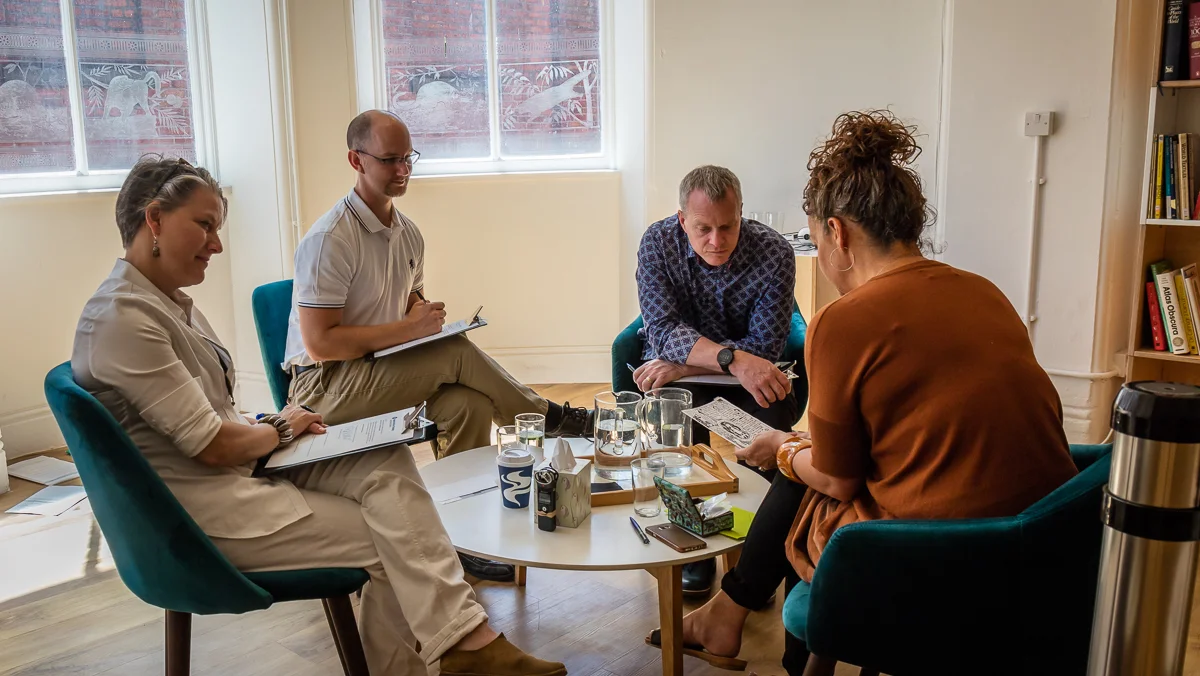Those who work in public safety, medical and health fields — and, increasingly, the cultural sector — often experience direct or vicarious traumas and stressors on the job that are unlike those seen in most other occupations. It’s not surprising, therefore, that recent research has shown that these workers are at higher risk of mental health injuries. It is this reality that led to the formation of First Responder Health, an organization that provides specialized trauma training for those who work in professions within and beyond public safety.
I was a core member of the First Responder Health training team. This presentation is one of the primary educational modules for the training program.
Trauma is an experience that exceeds our ability to manage stress. In clinical terms, trauma breaks containment: we lose our self-regulation, we are drawn into instinctive coping, and we are usually unaware of what’s happening. This is how trauma can happen invisibly and can go unseen. It is unusual for a person to notice that they are being traumatized while it’s happening. Consequently, one of the defining features of trauma involves the bypassing of (most of) our cognition: we just act — and we don’t notice.
Traumatic situations involve high levels of emotional and psychological stress. That stress, in turn, damages our ability to modulate our thoughts and emotions. We enter into a primordial consciousness that is focused on survival. The situation does not have to be authentically threatening to our survival — most traumas are not. But in the moment, as events unfold, as the stress of exposure increases and our coping abilities vanish, the defenses of our psychology begin to crumble and the body takes over. The body possesses millions of years of evolutionary wisdom about survival. It knows — without hesitation, without doubt, without thinking — how it will respond. The human animal has perfected distinct pathways of response (flight, freeze, orient, or fight) that are deeply interwoven with childhood development and the nervous system. They are automatic, autonomic, and highly effective — at least, effective from the point of view of the body, which simply wants to survive.
We respond to these moments — flight, freeze, orient, fight. We seek to escape, or we shut down, or we become anxious, or we get angry. Perhaps we start with one response and then shift to another. Or we blend them together. People are different; many things can happen. Although individual stress responses play out in a multitude of ways, they share one common feature: the responses lock. The deep coping mechanisms of the nervous system are not transient states when it comes to trauma. The patterns of behavior and emotion that accompany these states — driftiness, depression, fatigue, sleeplessness, irritability, impatience, overwhelm, and many others — persist long after the event. Sometimes they resolve in the days and weeks following exposure — people will say I felt weird after that experience, but I’m OK now — and sometimes they do not.
In my clinical practice, I often work with clients struggling to recover from traumatic situations that are decades in the past, and that often stretch back to early childhood. But all of us are vulnerable to trauma that is triggered by exposure to intense experiences. Previous trauma can be re-awakened by such intensity. We can be traumatized by exposure to others in distress. In our efforts to support others, we can be traumatized both vicariously and directly. We can also become overwhelmed with compassion fatigue, or hollowed out by empathy depletion. Trauma is one of the most common and pervasive human experiences, and we all face it in the natural course of our lives.
The roots and paths of trauma are complex and sometimes surprising. The approaches that people follow in their search for healing reflect the diversity and resilience of human character. Trauma can be a burden, an opening, a source of wisdom, and many other things. The path of healing does not lead us back to the person we once were. Trauma changes us, shapes us, creates new perspectives for us, and perhaps, even new values. These changes do not feel positive as they are happening. But authentic trauma healing also involves recognizing that wisdom lies hidden inside the wound. Meaning and purpose can be found through the experience. How do we find the wisdom, meaning, and purpose to carry us forward?
For information about workshops and training offered by Ross Laird, please visit this page or contact Ross directly.
